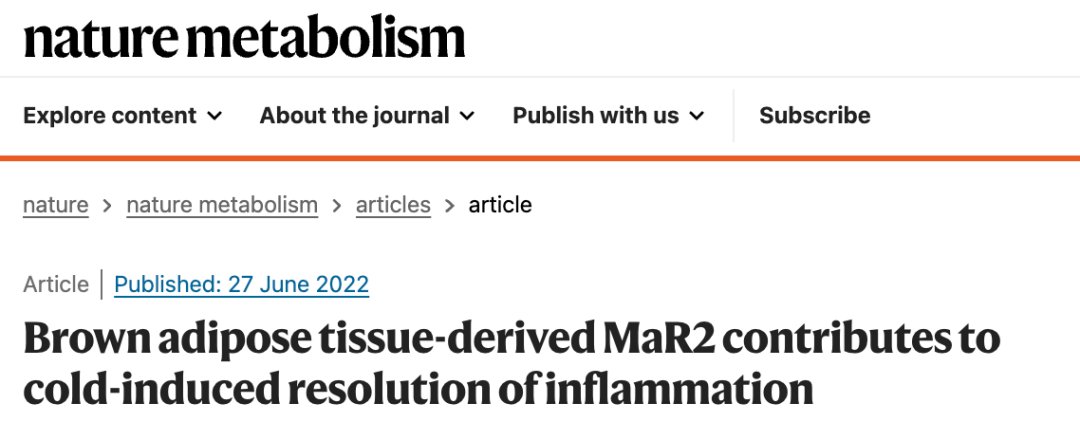Recently, rare high temperatures have occurred in many parts of the country, and netizens in some cities have even fried eggs on the ground.

I can feel sweating through the screen, so hurry to the air-conditioned room Hiding inside can not only prevent heatstroke, but some studies have shown that low temperature can also reduce weight.
Recently, a study published in the journal “Nature metabolism” by Yuhua Zeng’s team at Harvard Medical School found that low temperature can produce lipids through brown adipose tissue (BAT). The plasma molecule Maresin2 (MaR2) attenuates obesity-induced inflammation and increases insulin sensitivity and glucose tolerance in obese mice, providing a new strategy for the treatment of obesity.

During the development of obesity, macrophages, neutrophils Immune cells such as neutrophils and lymphocytes gradually accumulate in insulin-sensitive tissues and interfere with insulin signaling in the body, while releasing pro-inflammatory factors such as tumor necrosis factor-α (TNF-α), interleukin-1β (IL-1β), etc. , produce chronic inflammation and cause metabolic disorders. Blocking obesity-induced inflammation may provide new ideas for treating obesity.
Previous studies have shown that mild cold exposure increases energy expenditure in humans and may aid in weight loss. The researchers hope to start from this angle and reveal the relationship between low temperature and weight loss.
In this study, researchers created a mouse model. It gets fat when fed a typical high-fat Western diet. The researchers then placed these high-fat diet obese mice in a thermoneutral environment (30°C) and a cold environment (5°C) for 7 days, while another group used normal mice as a control group.
The results showed that the mice at 5℃ had improved insulin sensitivity and glucose metabolism, decreased body weight to a certain extent (possibly due to decreased fat and liver weight), and had a similar Obesity-related inflammation levels also decreased.
Further research found that the beneficial effects of cold exposure on obesity-induced inflammation and insulin resistance depended on brown adipose tissue (BAT) and the liver.
Specifically, cold and β3-adrenergic stimulation can promote BAT to produce the specific anti-inflammatory bioactive lipid maresin 2 (MaR2) and its isoforms In the body, it breaks down fat and plays a role in the resolution of inflammation. Among them, MaR2 reduces inflammation in obesity by targeting macrophages in the liver.
Therefore, BAT-derived MaR2 may contribute to the beneficial role of BAT activation in addressing obesity-induced inflammation and may provide new insights into treatments against obesity and its complications. method.
However, according to this article, it may only have a certain effect in a cold environment (5℃) for a long time. For the editor who is afraid of cold, it’s okay Bar.
References
https://www.nature.com/articles/s42255-022-00590-0